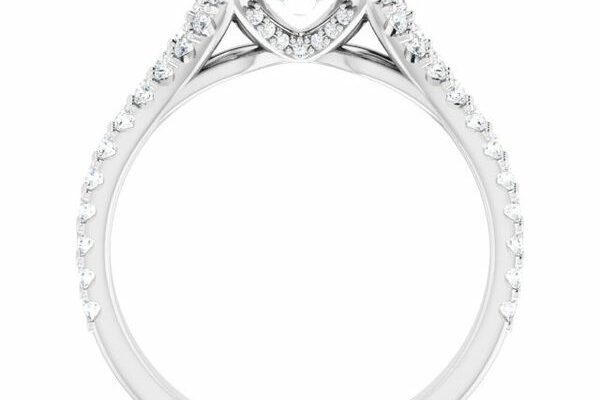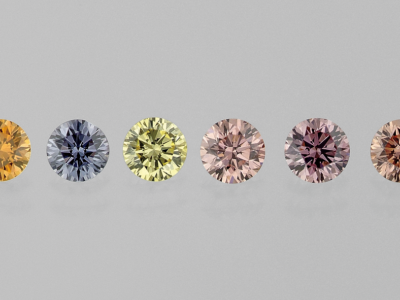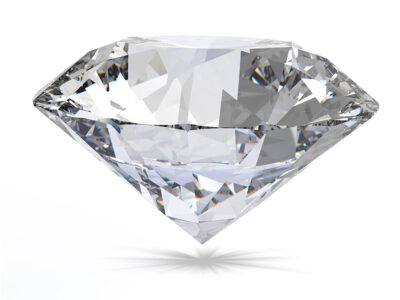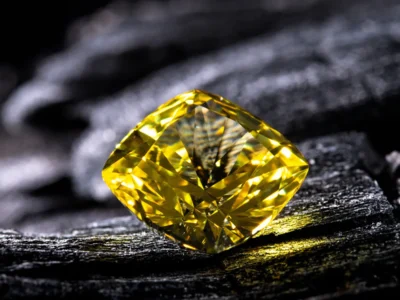Making a commitment to your beloved is an exhilarating experience, and one of the essential elements is choosing the ring’s setting style. This design dictate how the center stone is affixed onto the ring. Diamond rings present a wide range of settings, which can be classified into cathedral or non-cathedral settings. Cathedral settings have an arched shank that rises from the top, elevating the diamond high above the band. Alternatively, non-cathedral settings lack this arch, allowing for the gemstone to sit closer to the base of the ring.
Table of Contents
Cathedral vs Non-Cathedral Setting: Overview
Cathedral Setting
The cathedral setting gets its name from its architectural inspiration – the soaring arches and grandeur of a cathedral. This setting consists of a band that splits, creating arches that support the center stone.
The arches elevate the center stone, adding height and prominence to the ring. This setting is typically used for solitaire or three-stone rings, but can also be adapted to accommodate other diamond shapes.
Some key features of a cathedral setting are:
- Elevation: The arches of the cathedral setting elevate the center stone, allowing it to stand out and catch more light.
- Stability: The arches provide stability and support to the center stone, ensuring it stays secure.
- Vintage appeal: The cathedral setting has a classic and vintage aesthetic, reminiscent of the past.
Pros:
Enhanced Brilliance
The center stone of a jewelry piece is positioned to benefit from maximum light exposure. This elevated position helps to maximize the brilliance and sparkle of the center stone, reflecting more light from its surface and creating an enhanced display of radiance and beauty.
Its strategic positioning generates an increased volume of light that magnifies the stone’s luminosity and vibrancy, making it truly captivating as its facets sparkle effortlessly. By cleverly utilizing this technique, one can create a stunning piece that highlights the distinctive characteristics of the center stone for a mesmerizing effect.
Elegant and Timeless
The architectural beauty of the cathedral setting imbues any engagement ring with an air of sophistication and timeless elegance. This classic style, developed centuries ago, features a center gemstone that is elevated on four or six prongs in a crown.
These prongs are connected to the band and create an arch that symbolically represents everlasting love and commitment. The design itself is simple yet ornate, making it suitable for any taste or budget.
Beyond its aesthetic appeal, the cathedral setting offers stability due to its secure construction which ensures that the diamond remains firmly in place. This is further enhanced by its symmetrical shape which gives it an added sense of balance as well as enhancing the overall sparkle of the stone.
Prominent Appearance
The lofty arches of a cathedral setting have the potential to make the centerpiece diamond appear much grander than its true size. An ideal choice for those who desire an impressive visual impact, this setting helps to magnify your diamond’s allure.
Cons:
Takes Focus Away
Buyers should carefully consider the distinctive cathedral design, as it may draw attention away from the center diamond. Be sure you are satisfied with its aesthetics before deciding to make it the centerpiece of your engagement ring.
Increased Vulnerability
The elevated setting of a diamond increases its susceptibility to impacts and chips. Despite the protective benefits of a cathedral setting, the diamond remains vulnerable to damage.
Read Also: HRD vs GIA Certifications
Non-Cathedral Setting
Characterized by a low-rise design, a non-cathedral setting cradles the center stone closer to the finger with four or six secure prongs. With its sleek and minimalist look, this setting allows the diamond to take precedence. Coming in multiple styles from solitaire to halo and three-stone, there is a design for every taste.
Non-cathedral does not refer to an official term of a setting but instead generally refers to rings wherein the prongs protrude from the shank at one point.
Pros:
Variety
Non-cathedral settings provide a wider array of choices compared to their more limited counterparts. From pave to channel set diamond accents, solitaires, and double halos, nearly every design seen in cathedral settings can be crafted with a floating setting.
The arched structure of the cathedral limits the range of added designs that cannot be formed within its contours, differentiating it from settings without such structures.
Simple and Easy To Clean
The prime advantage is its uncluttered design with minimal metal used on the piece. Many designs are too bulky, diminishing the diamond’s radiance and making it appear dull.
Since diamonds are expensive, they should not be concealed beneath their settings. The sloping metal on cathedral settings can obstruct the profile view of the diamond.
When showcasing your diamond ring, it will not always be from a top-down perspective, so be cognizant of its presentation from all angles. An alternative to a cathedral setting is to opt for one that offers more visibility to the diamond and allows light to reach in from every direction.
For maximum protection and a minimal hassle, select settings like solitaire, trellis, or other non-cathedral designs.
These styles sit lower on the finger and are more resistant to snagging or collecting debris. A diamond set in one of these ways diminishes the need for professional cleaning or maintenance and provides additional shielding from everyday objects.
Choosing Between Cathedral and Non-cathedral Settings
When selecting between a cathedral or non-cathedral setting, contemplate your priorities:
Cathedral Setting: Appealing to the arched design and triangular gaps Seeking a large center diamond Craving an exalted setting that magnificently showcases the diamond Require maximum light entering the diamond from the top.
Non-Cathedral Setting: Averse to sloping arches that lead towards the diamond Yearning for various choices like bezel or tension settings Wary of prongs snagging in a high mounting Preferring effortless upkeep to maintain the setting debris-free Many online stores offer images of your diamond in particular settings.







Comments